Ghazal Ghazaei
Watch and Learn: Leveraging Expert Knowledge and Language for Surgical Video Understanding
Mar 14, 2025Abstract:Automated surgical workflow analysis is crucial for education, research, and clinical decision-making, but the lack of annotated datasets hinders the development of accurate and comprehensive workflow analysis solutions. We introduce a novel approach for addressing the sparsity and heterogeneity of annotated training data inspired by the human learning procedure of watching experts and understanding their explanations. Our method leverages a video-language model trained on alignment, denoising, and generative tasks to learn short-term spatio-temporal and multimodal representations. A task-specific temporal model is then used to capture relationships across entire videos. To achieve comprehensive video-language understanding in the surgical domain, we introduce a data collection and filtering strategy to construct a large-scale pretraining dataset from educational YouTube videos. We then utilize parameter-efficient fine-tuning by projecting downstream task annotations from publicly available surgical datasets into the language domain. Extensive experiments in two surgical domains demonstrate the effectiveness of our approach, with performance improvements of up to 7% in phase segmentation tasks, 8% in zero-shot phase segmentation, and comparable capabilities to fully-supervised models in few-shot settings. Harnessing our model's capabilities for long-range temporal localization and text generation, we present the first comprehensive solution for dense video captioning (DVC) of surgical videos, addressing this task despite the absence of existing DVC datasets in the surgical domain. We introduce a novel approach to surgical workflow understanding that leverages video-language pretraining, large-scale video pretraining, and optimized fine-tuning. Our method improves performance over state-of-the-art techniques and enables new downstream tasks for surgical video understanding.
SurGrID: Controllable Surgical Simulation via Scene Graph to Image Diffusion
Feb 11, 2025Abstract:Surgical simulation offers a promising addition to conventional surgical training. However, available simulation tools lack photorealism and rely on hardcoded behaviour. Denoising Diffusion Models are a promising alternative for high-fidelity image synthesis, but existing state-of-the-art conditioning methods fall short in providing precise control or interactivity over the generated scenes. We introduce SurGrID, a Scene Graph to Image Diffusion Model, allowing for controllable surgical scene synthesis by leveraging Scene Graphs. These graphs encode a surgical scene's components' spatial and semantic information, which are then translated into an intermediate representation using our novel pre-training step that explicitly captures local and global information. Our proposed method improves the fidelity of generated images and their coherence with the graph input over the state-of-the-art. Further, we demonstrate the simulation's realism and controllability in a user assessment study involving clinical experts. Scene Graphs can be effectively used for precise and interactive conditioning of Denoising Diffusion Models for simulating surgical scenes, enabling high fidelity and interactive control over the generated content.
SURGIVID: Annotation-Efficient Surgical Video Object Discovery
Sep 12, 2024Abstract:Surgical scenes convey crucial information about the quality of surgery. Pixel-wise localization of tools and anatomical structures is the first task towards deeper surgical analysis for microscopic or endoscopic surgical views. This is typically done via fully-supervised methods which are annotation greedy and in several cases, demanding medical expertise. Considering the profusion of surgical videos obtained through standardized surgical workflows, we propose an annotation-efficient framework for the semantic segmentation of surgical scenes. We employ image-based self-supervised object discovery to identify the most salient tools and anatomical structures in surgical videos. These proposals are further refined within a minimally supervised fine-tuning step. Our unsupervised setup reinforced with only 36 annotation labels indicates comparable localization performance with fully-supervised segmentation models. Further, leveraging surgical phase labels as weak labels can better guide model attention towards surgical tools, leading to $\sim 2\%$ improvement in tool localization. Extensive ablation studies on the CaDIS dataset validate the effectiveness of our proposed solution in discovering relevant surgical objects with minimal or no supervision.
SANGRIA: Surgical Video Scene Graph Optimization for Surgical Workflow Prediction
Jul 29, 2024Abstract:Graph-based holistic scene representations facilitate surgical workflow understanding and have recently demonstrated significant success. However, this task is often hindered by the limited availability of densely annotated surgical scene data. In this work, we introduce an end-to-end framework for the generation and optimization of surgical scene graphs on a downstream task. Our approach leverages the flexibility of graph-based spectral clustering and the generalization capability of foundation models to generate unsupervised scene graphs with learnable properties. We reinforce the initial spatial graph with sparse temporal connections using local matches between consecutive frames to predict temporally consistent clusters across a temporal neighborhood. By jointly optimizing the spatiotemporal relations and node features of the dynamic scene graph with the downstream task of phase segmentation, we address the costly and annotation-burdensome task of semantic scene comprehension and scene graph generation in surgical videos using only weak surgical phase labels. Further, by incorporating effective intermediate scene representation disentanglement steps within the pipeline, our solution outperforms the SOTA on the CATARACTS dataset by 8% accuracy and 10% F1 score in surgical workflow recognition
Dynamic Scene Graph Representation for Surgical Video
Sep 25, 2023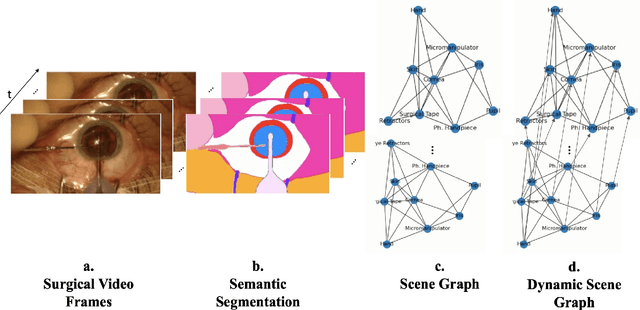

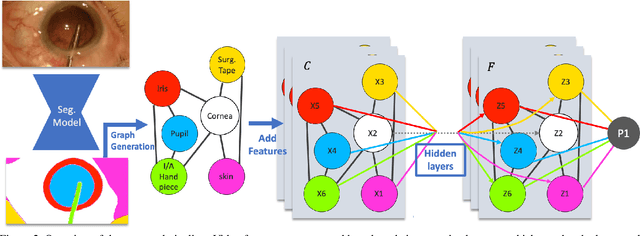
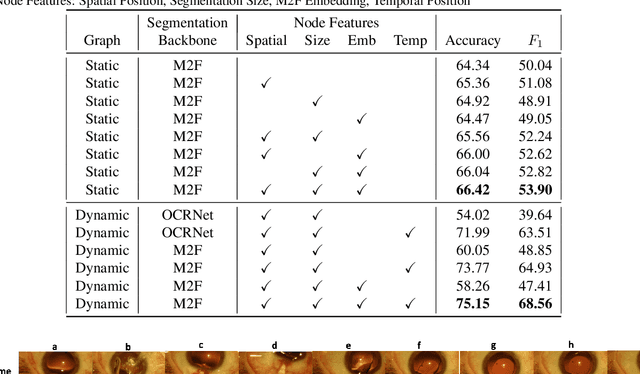
Abstract:Surgical videos captured from microscopic or endoscopic imaging devices are rich but complex sources of information, depicting different tools and anatomical structures utilized during an extended amount of time. Despite containing crucial workflow information and being commonly recorded in many procedures, usage of surgical videos for automated surgical workflow understanding is still limited. In this work, we exploit scene graphs as a more holistic, semantically meaningful and human-readable way to represent surgical videos while encoding all anatomical structures, tools, and their interactions. To properly evaluate the impact of our solutions, we create a scene graph dataset from semantic segmentations from the CaDIS and CATARACTS datasets. We demonstrate that scene graphs can be leveraged through the use of graph convolutional networks (GCNs) to tackle surgical downstream tasks such as surgical workflow recognition with competitive performance. Moreover, we demonstrate the benefits of surgical scene graphs regarding the explainability and robustness of model decisions, which are crucial in the clinical setting.
Grasp Type Estimation for Myoelectric Prostheses using Point Cloud Feature Learning
Aug 07, 2019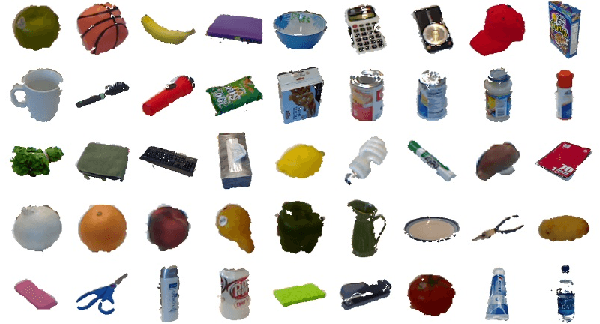
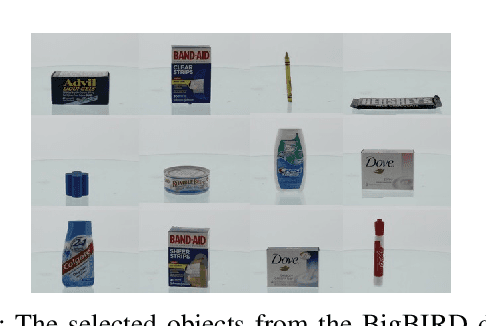

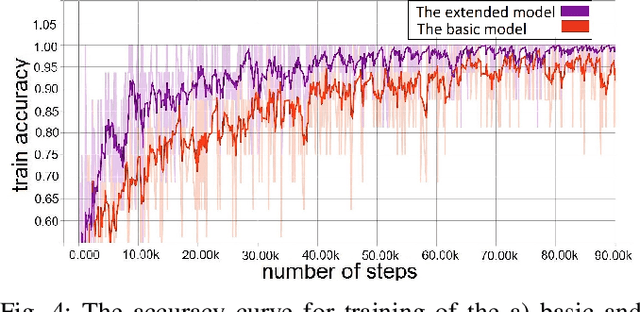
Abstract:Prosthetic hands can help people with limb difference to return to their life routines. Commercial prostheses, however have several limitations in providing an acceptable dexterity. We approach these limitations by augmenting the prosthetic hands with an off-the-shelf depth sensor to enable the prosthesis to see the object's depth, record a single view (2.5-D) snapshot, and estimate an appropriate grasp type; using a deep network architecture based on 3D point clouds called PointNet. The human can act as the supervisor throughout the procedure by accepting or refusing the suggested grasp type. We achieved the grasp classification accuracy of up to 88%. Contrary to the case of the RGB data, the depth data provides all the necessary object shape information, which is required for grasp recognition. The PointNet not only enables using 3-D data in practice, but it also prevents excessive computations. Augmentation of the prosthetic hands with such a semi-autonomous system can lead to better differentiation of grasp types, less burden on user, and better performance.
Dealing with Ambiguity in Robotic Grasping via Multiple Predictions
Nov 02, 2018
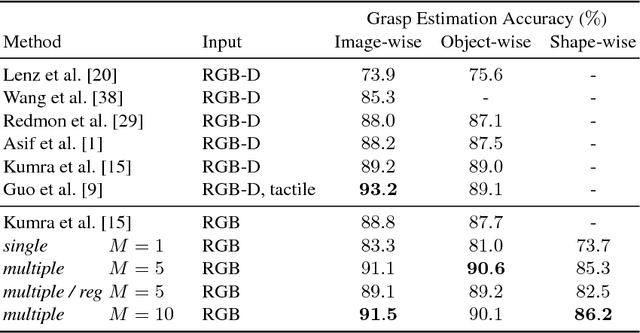
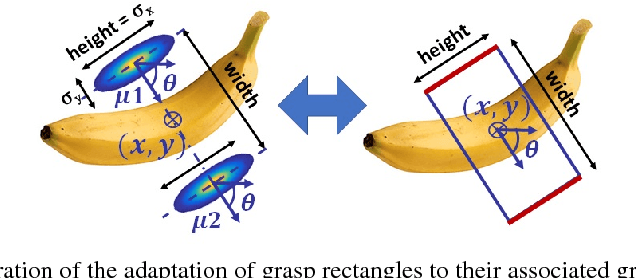

Abstract:Humans excel in grasping and manipulating objects because of their life-long experience and knowledge about the 3D shape and weight distribution of objects. However, the lack of such intuition in robots makes robotic grasping an exceptionally challenging task. There are often several equally viable options of grasping an object. However, this ambiguity is not modeled in conventional systems that estimate a single, optimal grasp position. We propose to tackle this problem by simultaneously estimating multiple grasp poses from a single RGB image of the target object. Further, we reformulate the problem of robotic grasping by replacing conventional grasp rectangles with grasp belief maps, which hold more precise location information than a rectangle and account for the uncertainty inherent to the task. We augment a fully convolutional neural network with a multiple hypothesis prediction model that predicts a set of grasp hypotheses in under 60ms, which is critical for real-time robotic applications. The grasp detection accuracy reaches over 90% for unseen objects, outperforming the current state of the art on this task.
 Add to Chrome
Add to Chrome Add to Firefox
Add to Firefox Add to Edge
Add to Edge